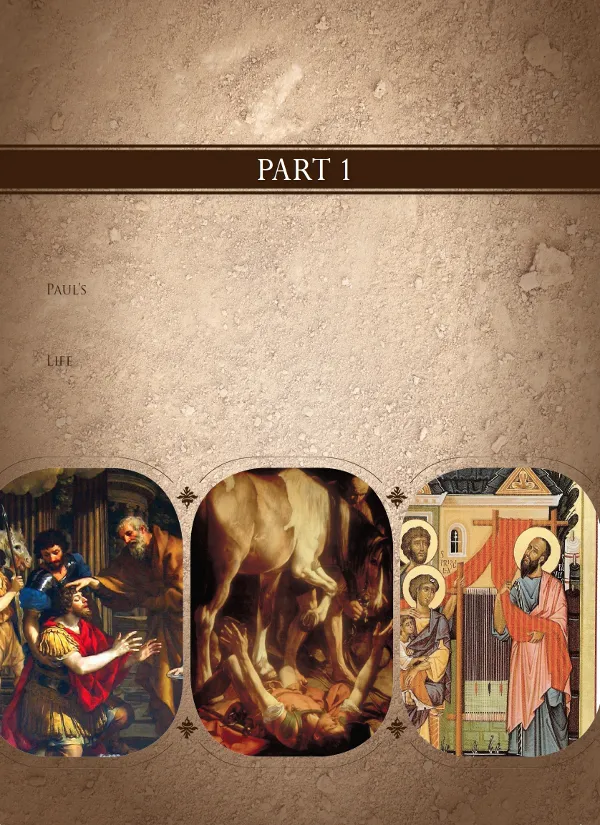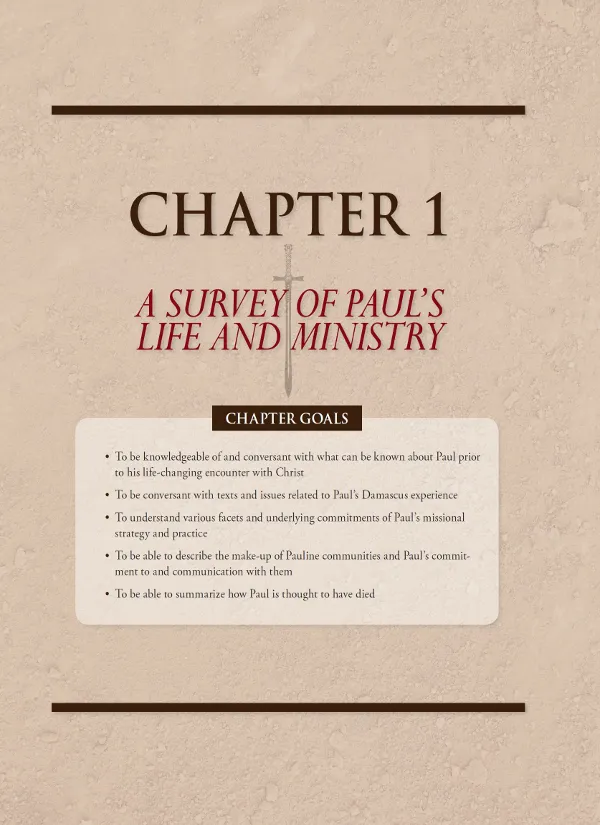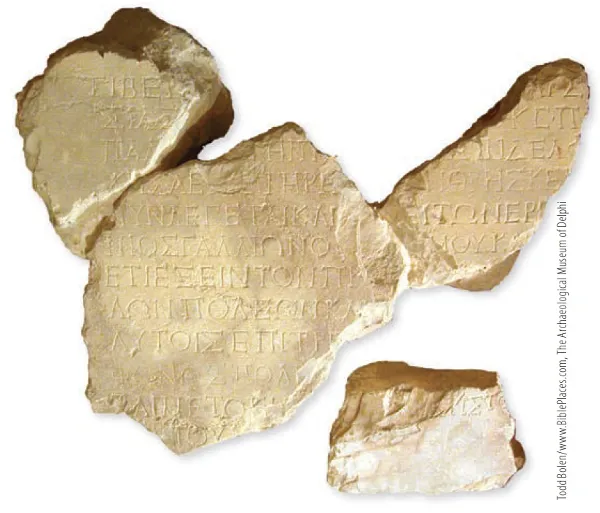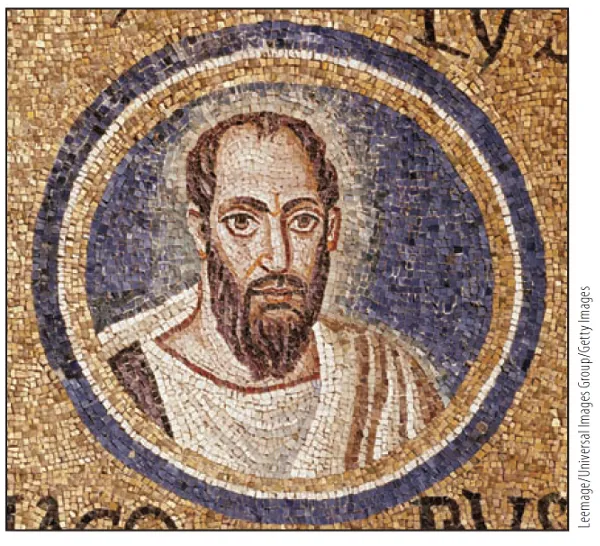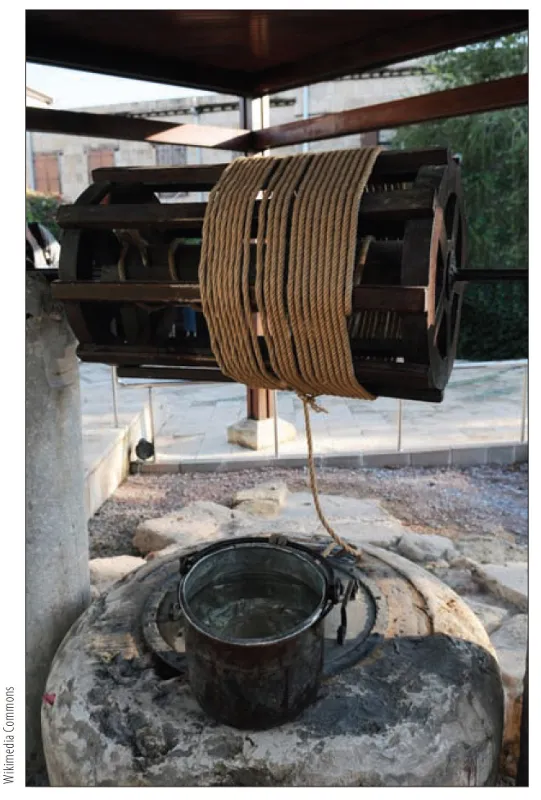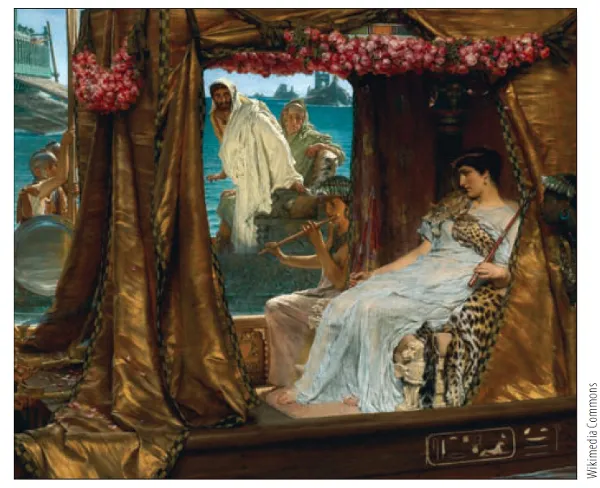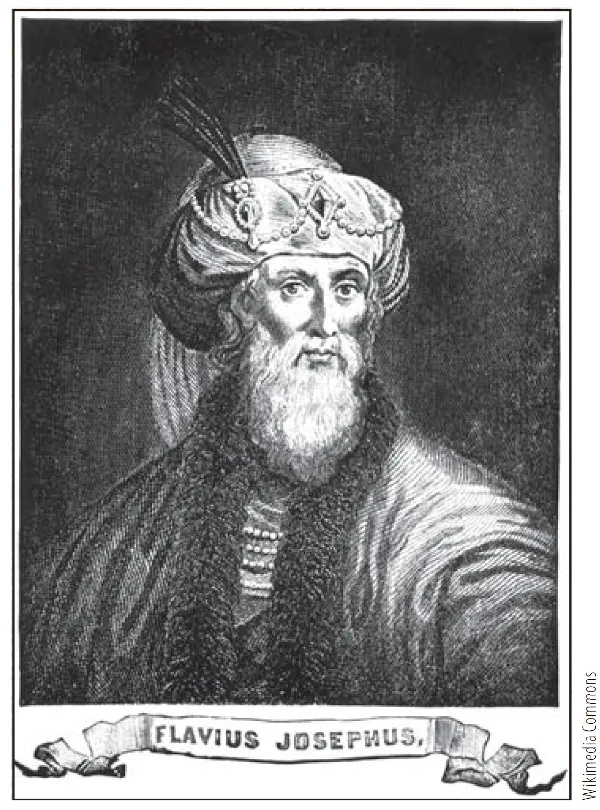![]()
![]()
![]()
CHAPTER OVERVIEW
1. From Tarsus to Damascus
2. Paul’s Encounter with Christ and Its Immediate Aftermath
3. Paul’s Mission to and Ministry in the Mediterranean World
4. Paul’s Departure
5. Concluding Remarks
6. Key People, Places, and Terms
7. Questions for Review and Discussion
8. Contemporary Theological Reflection
9. Going Further
KEY VERSES
Philippians 3:4b – 6: “If someone else thinks they have reasons to put confidence in the flesh, I have more: circumcised on the eighth day, of the people of Israel, of the tribe of Benjamin, a Hebrew of Hebrews; in regard to the law, a Pharisee; as for zeal, persecuting the church; as for righteousness based on the law, faultless.”
1 Corinthians 15:8 – 11: “And last of all he appeared to me also, as to one abnormally born. For I am the least of the apostles and do not even deserve to be called an apostle, because I persecuted the church of God. But by the grace of God I am what I am, and his grace to me was not without effect. No, I worked harder than all of them — yet not I, but the grace of God that was with me. Whether, then, it is I or they, this is what we preach, and this is what you believed.”
Galatians 1:11 – 17: “I want you to know, brothers and sisters, that the gospel I preached is not of human origin. I did not receive it from any man, nor was I taught it; rather, I received it by revelation from Jesus Christ. For you have heard of my previous way of life in Judaism, how intensely I persecuted the church of God and tried to destroy it. I was advancing in Judaism beyond many of my own age among my people and was extremely zealous for the traditions of my fathers. But when God, who set me apart from my mother’s womb and called me by his grace, was pleased to reveal his Son in me so that I might preach him among the Gentiles, my immediate response was not to consult any human being. I did not go up to Jerusalem to see those who were apostles before I was, but I went into Arabia. Later I returned to Damascus.”
1 Corinthians 9:19 – 22: “Though I am free and belong to no one, I have made myself a slave to everyone, to win as many as possible. To the Jews I became like a Jew, to win the Jews. To those under the law I became like one under the law (though I myself am not under the law), so as to win those under the law. To those not having the law I became like one not having the law (though I am not free from God’s law but am under Christ’s law), so as to win those not having the law. To the weak I became weak, to win the weak. I have become all things to all people so that by all possible means I might save some.”
2 Timothy 4:6 – 8: “For I am already being poured out like a drink offering, and the time for my departure is near. I have fought the good fight, I have finished the race, I have kept the faith. Now there is in store for me the crown of righteousness, which the Lord, the righteous Judge, will award to me on that day — and not only to me, but also to all who have longed for his appearing.”
Having met our subject and surveyed our volume in the introduction, we are now ready to “think through” Paul’s life, letters, and theology. In this chapter, our aim is to piece together Paul’s life. And what a life it was!
Born in Tarsus to Jewish parents, Paul (also known as Saul) was a zealous follower of the Lord (Yahweh) and of the law (Torah). Over time, he became both a Pharisee and a persecutor of Jesus-followers. A life-altering encounter with the risen Christ while en route to Damascus, however, caused Paul to reevaluate and to alter a number of his convictions and commitments. Having become convinced that Jesus is the living Lord, Paul proceeded to risk life and limb to proclaim the good news of Jesus’ death and resurrection to the nations. Like his Lord, Paul was ultimately put to death by Roman hands, but not before his work as an apostle was widely disseminated and well established.
Scholars seeking to date Paul’s life consider the Gallio Inscription to be a critical piece of archaeological evidence. This inscription, written by the Roman emperor Claudius ca. AD 52, mentions by name the proconsul Gallio, who served as proconsul of Achaia from 51 to 52 or 52 to 53. According to Acts 18:12 – 17, Paul appeared before Gallio during his ministry in Corinth. This is the one fixed date in Pauline chronology.
If the above is something of a trailer, below we consider the fuller motion picture of Paul’s life. Because we lack the details necessary to trace his life from womb to tomb, the picture that emerges is incomplete. This unfortunate reality will require us to cobble together, with critical care, autobiographical materials from Paul’s letters with biographical information found in Acts and other early Christian literature. Yet given the scarcity of our sources and the chronological chasm that separates us from our subject, we are fortunate to know as much about Paul as we do.
Paul, the subject of this textbook, has also been the subject of many works of art. Artistic geniuses such as Rembrandt, Caravaggio, Michelangelo, El Greco, and Raphael have all turned their creative energies toward Paul. The anonymous mosaic pictured here is one of the earliest preserved artistic portrayals of the apostle. It dates from the late fifth century and is currently housed in a museum in Ravenna, Italy.
A person can examine Paul’s life in any number of ways. In this chapter we will treat the apostle’s eventful life under the following four headings:
1. From Tarsus to Damascus
2. Paul’s Encounter with Christ and Its Immediate Aftermath
3. Paul’s Mission to and Ministry in the Mediterranean World
4. Paul’s Departure
While Pauline chronology is complicated and controversial, there is a broad scholarly consensus regarding the dating of certain periods and episodes in Paul’s life and ministry that we will follow as we proceed with our study.1
The well pictured here is known as “St. Paul’s Well.” It is located in Tarsus, the place of Paul’s birth, and dates back to Roman times. It is possible that Paul both drew and drank water from this well. Ancient Tarsus was located in eastern Cilicia in southeastern Asia Minor (modern-day Turkey).
During his struggle against Octavian, Marc Antony allied himself with Cleopatra VII in Tarsus. This painting by Sir Lawrence ala-Tadema imagines their meeting.
Pivotal Events
Pivotal events with approximate dates in Paul’s life include (all dates are AD):
• Birth: about 5 – 10
• Conversion/call: about 35
• Ministry “from Jerusalem to Illyricum” (Rom 15:19): late 30s to late 50s
• The Jerusalem Conference (Gal 2:1 – 10; cf. Acts 15:1 – 35): late 40s
• Arrest in Jerusalem and transfer to Caesarea and then to Rome: late 50s/early 60s
• Death: mid to late 60s
FROM TARSUS TO DAMASCUS
Birth and Upbringing
Place of birth. Paul does not indicate in his letters where he was born. Acts reports, however, that Paul was born in Tarsus in Cilicia.2 As it happens, Paul refers to the province of Cilicia in conjunction with Syria in Gal 1:21.3 Although Pauline and Lukan scholars have questioned the historical veracity of certain claims that Acts makes about Paul, few interpreters doubt that Acts accurately identifies the place of Paul’s birth.
Pompey won Cilicia for the Romans in 67 BC. In turn, he named Tarsus the provincial capital. Later Mark Antony made Tarsus a “free city” and exempted it from Roman taxation. Still later, Augustus confirmed and extended these civic privileges. By the close of the first century BC, Tarsus had earned a reputation as a place of culture and learning.5 Most scholars think that Paul was born in Tarsus near the beginning of the first century AD.
Josephus on the Pharisees
Jewish historian Josephus
The ancient Jewish historian Josephus (AD 37 – ca. 100), describes the Pharisees as follows in his Jewish Antiquities:
The Jews had for a great while three sects of philosophy peculiar to themselves; the sect of the Essenes, and the sect of the Sadducees, and the third sort of opinions was that of those called Pharisees; of which sects, although I have already spoken in the second book of the Jewish War, yet will I a little touch upon them now. Now, for the Pharisees, they live meanly, and despise delicacies in diet; and they follow the conduct of reaso...

